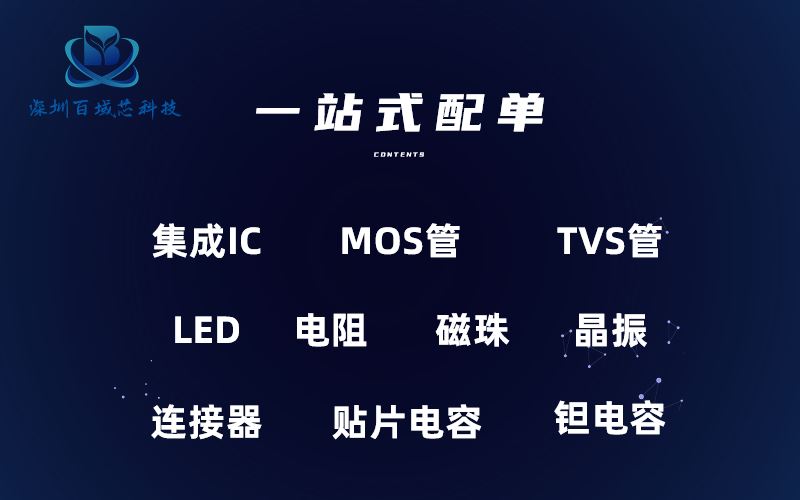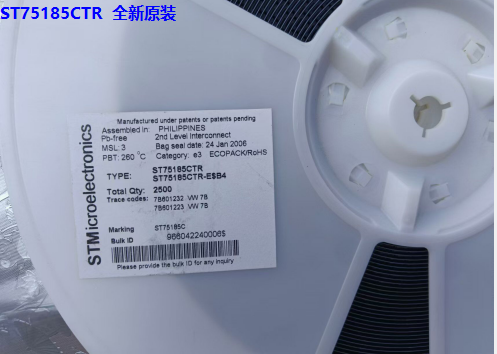


Title: SN74LS273DWR: A Comprehensive Overview of the Texas Instruments Edge-Triggered Flip-Flop
---
The SN74LS273DWR is a highly regarded 8-bit edge-triggered D-type flip-flop produced by Texas Instruments, a leader in the semiconductor industry. This device, part of the low-power Schottky (LS) logic family, is designed for high-speed, efficient digital circuit applications. The architecture of the SN74LS273DWR allows for the storage of data in a flexible manner, making it a crucial component in the design of sequential circuits.
Architectural Features
At its core, the SN74LS273DWR consists of a set of eight D-type flip-flops that are triggered by a clock signal. The output of each flip-flop can be controlled independently, providing a parallel data storage scheme. The flip-flops can be set or reset based on the control inputs, allowing for versatile data handling.
Each D flip-flop within the SN74LS273DWR has a Data (D) input, a Clock (CLK) input, and standard Set (S) and Reset (R) inputs. The synchronous operation—where the output changes occur only with the clock edge—ensures that data integrity is maintained across fast-changing inputs. This characteristic is particularly advantageous in digital systems requiring precise timing, such as synchronous counters, shift registers, and memory devices.
One significant aspect of the SN74LS273DWR is its edge-triggered nature. This design allows the device to respond to the rising or falling edge of the clock signal, which serves as a triggering mechanism for data capture. This feature minimizes glitches and ensures that data is latched only when intended, thus enhancing the reliability of digital communication.
Electrical Specifications
The SN74LS273DWR operates across a supply voltage ranging from 4.75V to 5.25V, making it compatible with standard TTL logic levels. The typical operating current is also significantly reduced due to its low-power Schottky technology, which allows for high-speed performance with minimized power consumption. This aspect is critical for battery-operated and energy-sensitive applications.
Propagation delays in the SN74LS273DWR are exceptionally low. The clock-to-Q propagation delay typically ranges between 15 to 20 nanoseconds, thereby allowing for high-speed data manipulation in fast digital designs. Moreover, the setup and hold times are crucial parameters that designers must consider to avoid data corruption, ensuring timing requirements are met when interfacing with other digital components.
Applications
The versatility and robustness of the SN74LS273DWR make it suitable for a myriad of applications in digital systems. Common applications include data buffering, shift registers, and various logic circuits where parallel data handling is necessary. Its role in asynchronous circuit elements, such as state machines, further emphasizes its importance in sequential logic design.
In the domain of computer engineering, the SN74LS273DWR is commonly used in systems that require reliable storage of binary information. This includes memory devices, where information must be stored and retrieved in a precise manner. The chip's ability to support multiple data paths makes it an optimal choice in situations where data needs to be processed in real-time, such as within microprocessor architectures and digital signal processing.
Interface and Integration
Interfacing the SN74LS273DWR with other digital components is relatively straightforward. Designers can easily implement this flip-flop in combination with multiplexers, demultiplexers, and various other logic gates to create complex digital circuits. The device's pins are configured to facilitate smooth integration with standard TTL-compatible logic, simplifying circuit design.
For integrated circuit designers, the ability to cascade multiple SN74LS273DWR devices allows for the creation of large-scale digital systems. By synchronizing the clock signals, designers can effectively manage complex data paths across multiple flip-flops, enabling functionalities such as parallel processing and high-speed data transfer.
Thermal Considerations
When designing systems that utilize the SN74LS273DWR, thermal management is an important factor to consider. The device, while designed to operate at lower power levels, still generates heat during operation. Prolonged exposure to excessive temperatures can affect performance and reliability. Therefore, appropriate PCB design practices must be employed, emphasizing heat dissipation strategies to maintain an optimal operating environment.
Packaging and Availability
The SN74LS273DWR is housed in a 20-pin TSSOP (Thin Shrink Small Outline Package), which offers a compact form factor suitable for modern applications requiring space efficiency. This packaging not only ensures ease of mounting on PCBs but also aids in the proper heat management of the device through effective thermal conduction.
Texas Instruments ensures a consistent supply chain for the SN74LS273DWR, and its robust design philosophy aligns with the needs of contemporary electronics manufacturers. The availability of this flip-flop through various distributors further enhances its accessibility for engineers and developers in diverse fields.
Future Prospects
As digital systems become increasingly complex and data-driven, the demand for reliable, high-speed storage components continues to grow. The SN74LS273DWR, with its edge-triggered capabilities and efficient operation, is poised to remain relevant in future applications. Advances in semiconductor technology may further enhance its performance characteristics, allowing it to meet the evolving needs of designers in cutting-edge fields such as artificial intelligence, IoT, and high-speed telecommunications.
Conclusion
The SN74LS273DWR is a sophisticated and essential component within the realm of digital electronics, reflecting the ingenuity and precision of Texas Instruments' engineering. With its robust feature set, electrical efficiency, and versatility, it stands as a cornerstone for developers looking to implement reliable, high-speed data handling in their designs. As technology continues to advance, the relevance of such components will undoubtedly endure in modern electronic systems.









